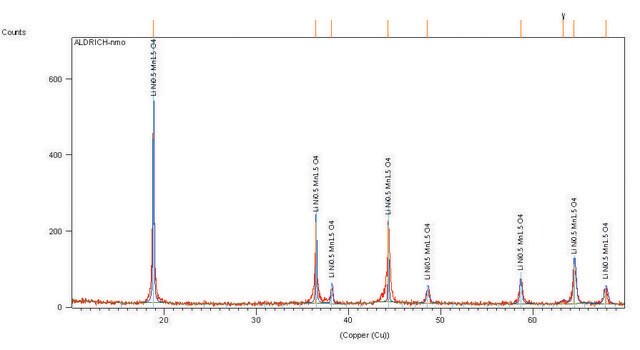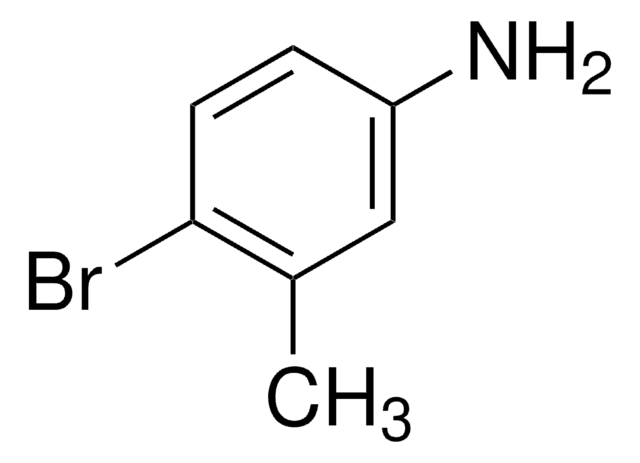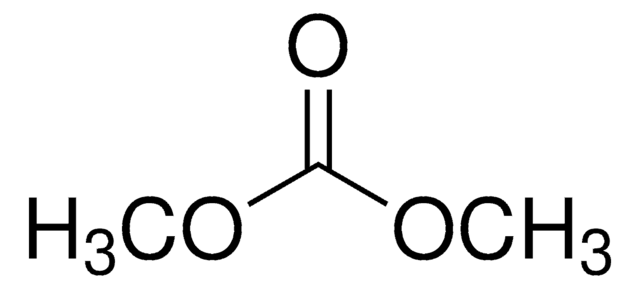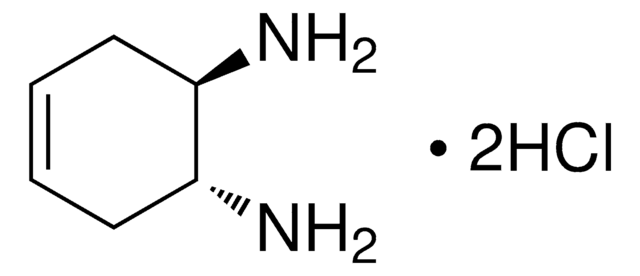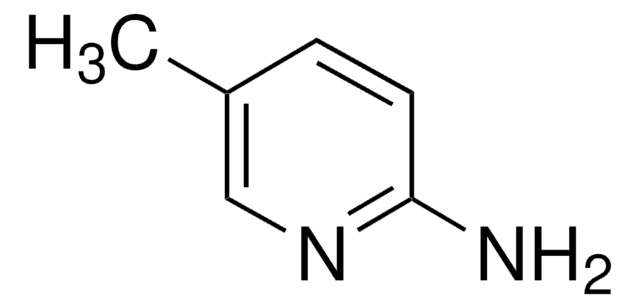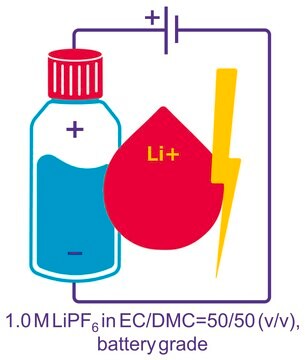765198
Lithium manganese nickel oxide
electrode sheet, aluminum substrate, size 5 in. × 10 in.
Sinónimos:
LMNO, Lithium nickel manganate
About This Item
Productos recomendados
grado
battery grade
descripción
Nominal Voltage: 4.7 V, Li/Li+
Análisis
≥98%
formulario
solid
composición
loading, ≥80%
características de los productos alternativos más sostenibles
Design for Energy Efficiency
Learn more about the Principles of Green Chemistry.
sustainability
Greener Alternative Product
Extensión del etiquetado
≥80% loading
tamaño
5 in. × 10 in.
grosor
25-50 μm
tamaño de partícula
4-7 μm (typical)
capacidad
115 mAh/g(minimum)
125 mAh/g(nominal at 0.1C)
mp
>1000 °C
aplicaciones
battery manufacturing
categoría alternativa más sostenible
, Enabling
cadena SMILES
[Li+].[Li+].[O-][Mn]=O.[O-][Ni]=O.O=[Mn]=O.O=[Mn]=O
InChI
1S/2Li.3Mn.Ni.8O/q2*+1;;;;;;;;;;;2*-1
Clave InChI
NTWFBJKNXFUJHM-UHFFFAOYSA-N
Descripción general
Aplicación
The LMNO casted electrode sheets can be cut into appropriate size and is ready to be used in lithium ion batteries.
Otras notas
Operating Condiditons:
- Recommended maximum charge voltage: 5.0 V vs Li/Li+
- Recommended maximum charge current: 5 C
- Recommended cut-off voltage for discharge: 3.5 V vs Li/Li+
- Recommended maximum discharge current: 5 C
- Recommended charge method: constant current - constant voltage
Palabra de señalización
Warning
Frases de peligro
Consejos de prudencia
Clasificaciones de peligro
Carc. 2 - Skin Sens. 1
Código de clase de almacenamiento
11 - Combustible Solids
Clase de riesgo para el agua (WGK)
WGK 3
Punto de inflamabilidad (°F)
Not applicable
Punto de inflamabilidad (°C)
Not applicable
Elija entre una de las versiones más recientes:
Certificados de análisis (COA)
¿No ve la versión correcta?
Si necesita una versión concreta, puede buscar un certificado específico por el número de lote.
¿Ya tiene este producto?
Encuentre la documentación para los productos que ha comprado recientemente en la Biblioteca de documentos.
Los clientes también vieron
Artículos
Professor Qiao’s laboratory lays out recent advances in conversion type lithium metal fluoride batteries. This review explores key concepts in developing electrochemically stable microstructures for wide Li-ion insertion channels.
Li-ion batteries are currently the focus of numerous research efforts with applications designed to reduce carbon-based emissions and improve energy storage capabilities.
The critical technical challenges associated with the commercialization of electric vehicle batteries include cost, performance, abuse tolerance, and lifespan.
Lithium-ion batteries (LIBs) have been widely adopted as the most promising portable energy source in electronic devices because of their high working voltage, high energy density, and good cyclic performance.
Nuestro equipo de científicos tiene experiencia en todas las áreas de investigación: Ciencias de la vida, Ciencia de los materiales, Síntesis química, Cromatografía, Analítica y muchas otras.
Póngase en contacto con el Servicio técnico
